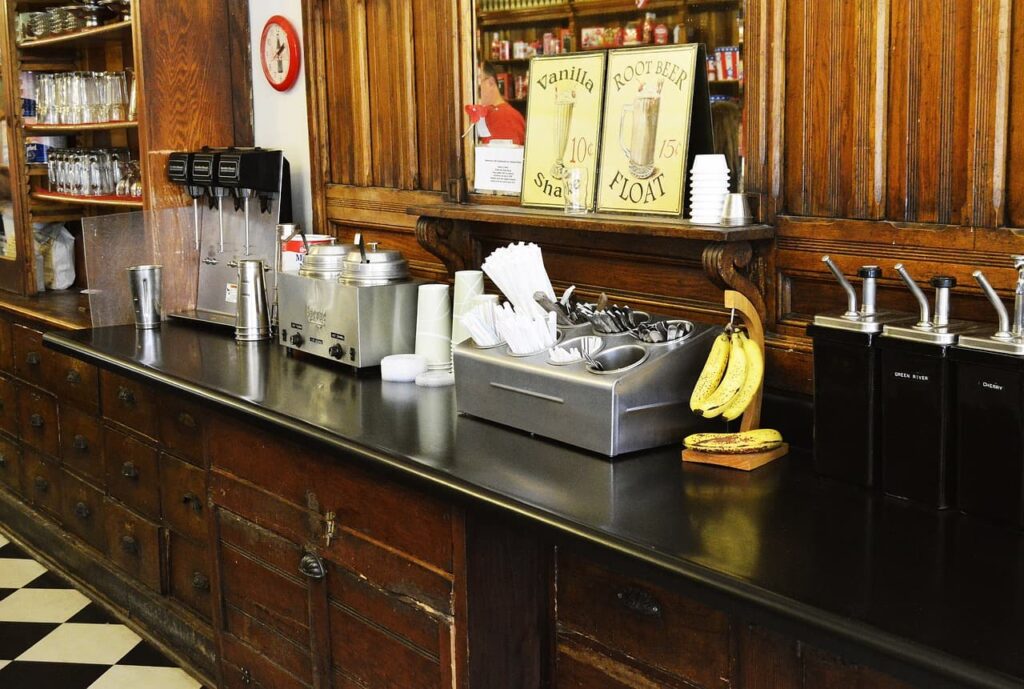California, known for its commitment to environmental stewardship, is home to a growing number of cafes that are leading the way in sustainable practices. These cafes are not just serving delicious coffee and pastries; they are also making significant efforts to reduce their environmental footprint. In this article, we will explore some of the key sustainable practices adopted by California cafes and how these efforts are contributing to a greener future.
Eco-Friendly Sourcing
One of the primary ways California cafes are promoting sustainability is through eco-friendly sourcing of their products. Many cafes are now prioritizing the purchase of organic, fair-trade coffee beans. These beans are grown without the use of harmful pesticides and fertilizers, which not only benefits the environment but also supports the health and wellbeing of coffee farmers. By choosing fair-trade products, cafes are ensuring that farmers receive fair wages and work under safe conditions, promoting social sustainability.
In addition to coffee, cafes are also sourcing locally-produced ingredients for their food offerings. This reduces the carbon footprint associated with transporting goods over long distances. Local sourcing also supports local farmers and economies, fostering a sense of community and sustainability. For example, many cafes in California partner with local bakeries, dairy farms, and produce suppliers to provide fresh, seasonal items on their menus.
Waste Reduction Initiatives
Waste reduction is another critical area where California cafes are making strides. Single-use plastics have long been a major contributor to environmental pollution, but many cafes are now taking steps to minimize their use. This includes offering reusable or biodegradable alternatives for items like straws, cutlery, and cups. Some cafes even provide discounts to customers who bring their own reusable cups or containers, incentivizing sustainable behavior.
Moreover, composting and recycling programs are becoming standard practice in many California cafes. Organic waste, such as coffee grounds and food scraps, is often composted, turning waste into valuable nutrient-rich soil that can be used for gardening and farming. Recycling programs ensure that materials like paper, cardboard, and certain plastics are properly sorted and recycled, reducing the amount of waste sent to landfills.
One innovative approach some cafes are adopting involves partnering with local organizations to repurpose waste. For instance, used coffee grounds can be donated to community gardens or farms, where they serve as an excellent fertilizer. This not only reduces waste but also supports local agriculture.
For more detailed insights on various innovative initiatives, you can check out https://playfortune.net.br/.
Energy Efficiency and Green Building Practices
Energy efficiency is another area where California cafes are making significant improvements. Many cafes are now incorporating energy-efficient appliances and lighting to reduce their energy consumption. LED lighting, energy-efficient espresso machines, and refrigeration units are just a few examples of how cafes are cutting down on their energy use.
In addition to using energy-efficient equipment, some cafes are also investing in renewable energy sources. Solar panels are a popular choice in sunny California, allowing cafes to harness the power of the sun to generate electricity. This not only reduces reliance on non-renewable energy sources but also lowers operating costs in the long run.
Green building practices are also gaining traction in the café industry. Cafes are increasingly being designed or renovated with sustainability in mind, using materials that are eco-friendly and sustainable. This includes everything from recycled building materials to low-VOC paints and energy-efficient windows. These practices help to create a healthier environment for both customers and staff while reducing the overall environmental impact of the building.

Community Engagement and Education
California cafes are not only implementing sustainable practices within their operations but are also playing a vital role in educating and engaging the community. Many cafes host events and workshops focused on sustainability, such as how to compost at home, the importance of recycling, and the benefits of sustainable farming practices. These events help to raise awareness and encourage the community to adopt more sustainable habits.
Additionally, cafes often collaborate with local environmental organizations to support various green initiatives. This can include participating in local clean-up efforts, supporting tree planting campaigns, or donating a portion of their profits to environmental causes. By actively engaging with the community, cafes are helping to foster a culture of sustainability that extends beyond their own operations.
For those interested in learning more about sustainability efforts in different sectors, including the hospitality industry, the play fortuna casino provides some fascinating insights.
In conclusion, California cafes are at the forefront of the sustainable movement, adopting a variety of practices that not only benefit the environment but also support local communities and economies. From eco-friendly sourcing and waste reduction initiatives to energy efficiency and community engagement, these cafes are setting an example for others to follow. As consumers, supporting these sustainable businesses is a step we can all take towards a greener future.



